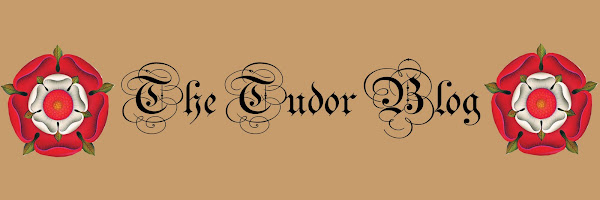On October 6, 1542, Sir Thomas Wyatt died at the home of a friend. Wyatt was a 16th-century English lyrical poet credited with introducing the sonnet into English.

Born at Allington Castle, near Maidstone in Kent, his father, Henry Wyatt, had been one of Henry VII's Privy Councillors and remained a trusted adviser when Henry VIII came to the throne in 1509. In his turn, Thomas Wyatt followed his father to court after his education at St John's College, Cambridge.
Wyatt was over six feet tall and reportedly, both handsome and physically strong. Wyatt was not only a poet, but also an ambassador in the service of Henry VIII. He first entered Henry's service in 1516 as 'Sewer Extraordinary', and the same year he began studying at St John's College of the University of Cambridge.
He married Elizabeth Brooke (1503–1560), in 1521, and a year later she gave birth to a son, Thomas Wyatt, the younger, who led Wyatt's rebellion many years after his father's death. In 1524 Henry VIII assigned Wyatt to be an Ambassador at home and abroad, and some time soon after, Wyatt separated from his wife on grounds of adultery.
He accompanied Sir John Russell to Rome to help petition Pope Clement VII to annul the marriage of Henry VIII to his first wife, Katherine of Aragon, an embassy whose goal was to make Henry free to marry Anne Boleyn. A fascinating mission if you believe, as I do, that Wyatt fell in love with Anne years before.
Many legends and conjectures have grown up around the notion that the young, unhappily married Wyatt fell in love with a young Anne Boleyn in the early-to-mid 1520s. His grandson (who penned a biography of Anne Boleyn many years after her death) wrote that the moment Thomas Wyatt had seen "this new beauty" on her return from France in winter 1522 he had fallen in love with her. According to various gossips they were lovers. Allegedly, Wyatt was Anne's suitor, even though he was married. When she attracted King Henry VIII's attentions sometime around 1525, Wyatt was the last of Anne's other suitors to be ousted by the king. According to Wyatt's grandson, after an argument over her during a game of bowls with the King, Wyatt was sent on, or himself requested, a diplomatic mission to Italy.
Wyatt's translation from Petrarch, "Whoso list to hunt," may refer to these early encounters with Anne Boleyn. Wyatt was at Calais when she and King Henry made their only foreign sojourn together (only a short time before they were married in secret). His poem "Sometime I fled the fire" may refer to this voyage.
In January 1533, Anne Boleyn is said to have told Wyatt, in front of other courtiers, that she had a 'furious hankering for apples' and that the King thought she might be pregnant. This was how the court discovered that Henry and Anne were already married. Wyatt would go on to serve as Chief Ewer (a distinguished serving role) at her Coronation. One poem of Wyatt's that certainly refers to Boleyn, after her demise, is "After great storms the calm returns;" its refrain, "the most happy," was one of her official mottoes.
In May 1536, Wyatt was imprisoned in the Tower of London along with five other men accused of committing adultery with Anne Boleyn -- including her brother.
Unlike the others, however, Wyatt was released from the Tower later that year, thanks to his friendship or his father's friendship with Thomas Cromwell, and he returned to his duties.
During his stay in the Tower he may have witnessed not only the execution of Anne Boleyn (May 19, 1536) from his cell window but also the executions of the five men.
Wyatt also wrote a poem inspired by the downfall and executions of all involved.
Wyatt fell ill and died in October 1542 around the age of 39, while staying with his friend Sir John Horsey at Clifton Maybank House in Dorset. He is buried in nearby Sherborne Abbey.
DescendantsLong after Thomas Wyatt's death, his only son, Thomas Wyatt the younger, led a thwarted rebellion against Henry's daughter, Queen Mary I, for which he was executed. The rebellion's aim was to set the Protestant-minded Elizabeth, the daughter of Anne Boleyn, on the throne. His sister Margaret Wyatt was the mother of Henry Lee of Ditchley, from whom descend the Lee's of Virginia, including Robert E. Lee. Thomas Wyatt's great grandson was Virginia Governor Francis Wyatt.
None of Wyatt's poems were published during his lifetime—the first book to feature his verse was printed fifteen years after his death.
WHOSO list to hunt ? I know where is an
hind !
But as for me, alas ! I may no more,
The vain travail hath wearied me so sore ;
I am of them that furthest come behind.
Yet may I by no means my wearied mind
Draw from the deer ; but as she fleeth afore
Fainting I follow ; I leave off therefore,
Since in a net I seek to hold the wind.
Who list her hunt, I put him out of doubt
As well as I, may spend his time in vain !
And graven with diamonds in letters plain,
There is written her fair neck round about ;
' Noli me tangere ; for Cæsar's I am,
And wild for to hold, though I seem tame.'
[Noli me tangere = "touch me not." ]
- Posted using BlogPress from my iPad












































